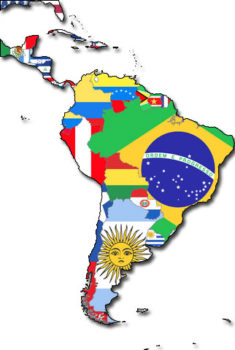'Mobile is Increasingly THE First Screen for Video in Brazil'
by on 3rd Jun 2015 in News

TubeMogul's recent quarterly report was one of the first to chronicle the growth of the programmatic advertising market at length in the region's standout market Brazil, demonstrating an 'explosion of growth' in the programmatic advertising space between Q4 2014, and Q1 2015. In a Q&A, translated by Gabriela Stripoli, ExchangeWire, editor, LatAm, Adriano Hayashi, TubeMogul, country manager, Brazil, offers further insight.
The TubeMogul report also demonstrated a huge growth in demand for mobile ad formats, with impressive viewability rates of 66% throughout the period, but brands are thus far failing to take advantage. ExchangeWire probes further below.
EW: In the report, TubeMogul emphasises the growth of the Brazilian market and that the company started in the best time. How this reflects in the volume of TubeMogul's operations in the country?
AH: We are working with major agencies and trading desks in the region, and have global relationships with several brands that we are gradually activating in Brazil. The opportunity to simplify the process for reaching viewers across screens is a big one that we are well positioned to lead.
EW: Why would you say that the quality of inventory in Brazil is high? Do you see it keeping steadily in the near future?
AH: We have a dedicated team, that screens and eliminates fraudulent traffic from within our systems. Still, it’s clear that viewers are watching video everywhere. Both premium inventory (i.e. from top broadcasters) and longer-tail inventory that caters to more specific interests (i.e. gamers) are on the rise.
Ultimately, what matters to the advertiser is how engaged a viewer is with their message— so are they watching the ad, interacting with it, remembering it...
EW: The fact that the VCPM is the lowest ever can encourage more investments in programmatic video?
AH: The relative affordability for viewable impressions in Brazil is not escaping notice. It represents a great opportunity to connect with audiences, taking advantage of the uncluttered environment, lean-forward experience, and may lead to a shift of budgets from TV and other mediums.
EW: I have heard interesting comments about pre-roll, specially the skippable ones, in the Brazilian market – sort of balancing the interest of the audience with this format, which takes 100% of the attention of the audience but as soon as they can, they skip it. Does TubeMogul have an "advisory" service to agencies and marketers? And what is the general recommendation to it? Specially if you consider a decrease in the cost per minute of such format.
AH: We arm marketers with a plethora of data both in our software and through research reports like these so that they can allocate budgets effectively and make informed decisions across screens. TubeMogul's self-serve software puts marketers in total control of not only the exact sites where an ad runs, but also cost and inventory available by format based on each marketer's specific goals.
EW: Is mobile the big trend about programmatic video? How are campaigns being developed to it?
AH: In video, what was once called the "second screen" is increasingly becoming the first screen, especially for specific audiences in Brazil. Many viewers watch videos on their phones first, and TV and computers second. Globally, one in four video ads (25.7%) on iPad and Android tablets are seen during traditional television prime time hours (8 p.m. to midnight).
We are seeing an increasing number of advertisers add interactivity to mobile video ads, offering viewers games or other ways to engage deeper than simply watching an ad passively.
Though agencies and brands are interested in mobile, the volume of inventory and users available is far greater than what is effectively invested on mobile branding in the region.
EW: Overall, now that it has been almost one year that you are leading TubeMogul in Brazil, how do you see the evolving of the understanding of the market so far - from marketers to agencies? Would you give us some comments on that?
AH: It has been an interesting transition from Cadreon in Australia to heading up Brazil for TubeMogul. Though Programmatic is not in its early days here anymore, there’s a clear knowledge gap between stakeholders. However, marketers are eager to learn more and I think the transition is happening faster than in other markets, since the possibility to capitalise on many of the early insights is very attractive for brands
Follow @adrohax on Twitter
Starting next Monday, ExchangeWire will publish the Latin American Weekly RoundUp, with the main stories of the data-driven advertising market in the region collected by the Gabriela Stripoli, ExchangeWire, editor, LatAm.
AnalyticsCross-ChannelDisplayLATAMTradingViewability








Follow ExchangeWire